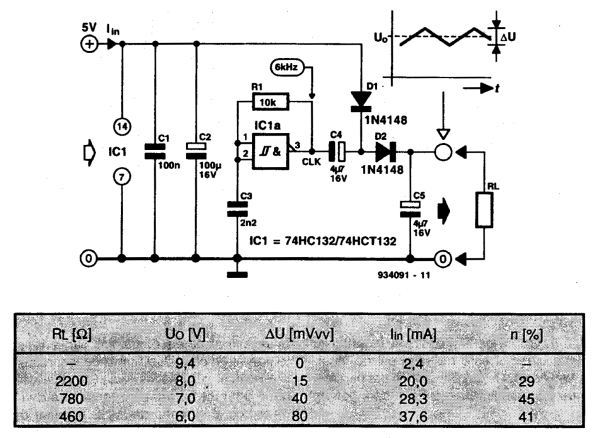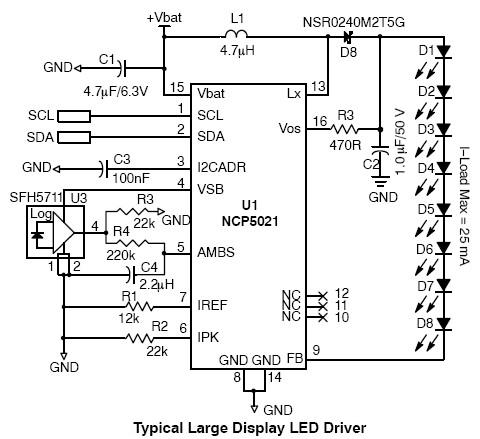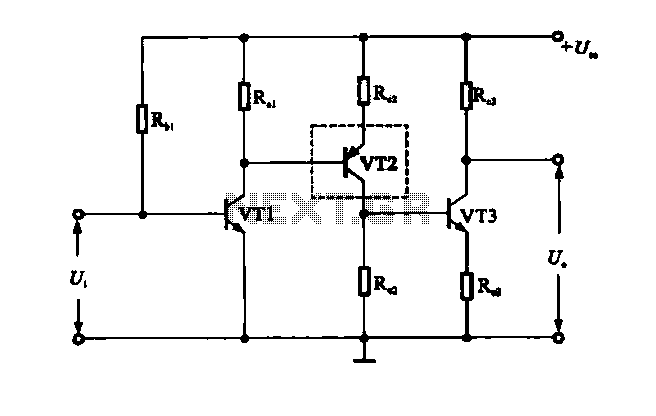
Cheap DC Voltage Doubler Circuit

This is an inexpensive DC voltage doubler circuit diagram that requires a minimal number of components and is capable of delivering 10V from a 5V power supply. If the oscillator needs to be...
The circuit operates on the principle of voltage doubling through capacitive charge and discharge cycles, utilizing an oscillator to create an alternating waveform. The essential components of the circuit include two capacitors, two diodes, and an oscillator circuit, which can be implemented using a simple transistor or a dedicated oscillator IC.
The first stage of the circuit involves the oscillator generating a square wave signal, which alternates between high and low states. During the positive cycle of this waveform, the first diode becomes forward-biased, allowing current to flow from the 5V supply through the first capacitor, charging it to approximately 5V. Simultaneously, the second diode remains reverse-biased, preventing current from flowing back to the power supply.
In the negative cycle, the first diode becomes reverse-biased, while the second diode becomes forward-biased. This action allows the charge stored in the first capacitor to be added to the 5V supply voltage, effectively doubling the voltage across the second capacitor to approximately 10V. The second capacitor then holds this voltage, which can be used to power other components or circuits requiring a higher voltage.
It is important to consider the load that will be connected to the output of the voltage doubler, as the output voltage may sag under heavy loads. Additionally, the choice of diodes should be made carefully; they should have a low forward voltage drop and be rated for the expected current and reverse voltage to ensure reliable operation. Capacitors should also be rated appropriately for voltage and capacitance to minimize ripple and support the desired load conditions.
Overall, this DC voltage doubler circuit is a cost-effective solution for applications requiring a higher voltage from a lower voltage power source, making it suitable for various electronic projects and devices.This is a cheap DC Voltage Doubler Circuit diagram, which requires a few components and will deliver 10V from a 5V power supply. If the oscillator must be.. 🔗 External reference
The circuit operates on the principle of voltage doubling through capacitive charge and discharge cycles, utilizing an oscillator to create an alternating waveform. The essential components of the circuit include two capacitors, two diodes, and an oscillator circuit, which can be implemented using a simple transistor or a dedicated oscillator IC.
The first stage of the circuit involves the oscillator generating a square wave signal, which alternates between high and low states. During the positive cycle of this waveform, the first diode becomes forward-biased, allowing current to flow from the 5V supply through the first capacitor, charging it to approximately 5V. Simultaneously, the second diode remains reverse-biased, preventing current from flowing back to the power supply.
In the negative cycle, the first diode becomes reverse-biased, while the second diode becomes forward-biased. This action allows the charge stored in the first capacitor to be added to the 5V supply voltage, effectively doubling the voltage across the second capacitor to approximately 10V. The second capacitor then holds this voltage, which can be used to power other components or circuits requiring a higher voltage.
It is important to consider the load that will be connected to the output of the voltage doubler, as the output voltage may sag under heavy loads. Additionally, the choice of diodes should be made carefully; they should have a low forward voltage drop and be rated for the expected current and reverse voltage to ensure reliable operation. Capacitors should also be rated appropriately for voltage and capacitance to minimize ripple and support the desired load conditions.
Overall, this DC voltage doubler circuit is a cost-effective solution for applications requiring a higher voltage from a lower voltage power source, making it suitable for various electronic projects and devices.This is a cheap DC Voltage Doubler Circuit diagram, which requires a few components and will deliver 10V from a 5V power supply. If the oscillator must be.. 🔗 External reference





